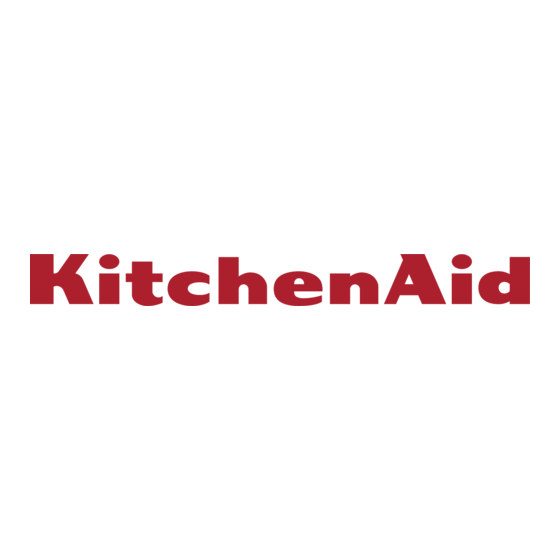KitchenAid KOSP 6610 Gebrauchsanweisung Handbuch - Seite 10
Blättern Sie online oder laden Sie pdf Gebrauchsanweisung Handbuch für Backofen KitchenAid KOSP 6610 herunter. KitchenAid KOSP 6610 16 Seiten.

Care and Maintenance
Important: Do not use water pressure cleaners or steam cleaners.
Oven exterior and internal frame of the oven
• To avoid scratching or breaking the door glass, when cleaning never use rough or abrasive materials or
metal scrapers.
• Clean with a damp cloth. If it is very dirty, add a few drops of washing up liquid to the water. Wipe with
a dry cloth.
• Do not use corrosive or abrasive cleaning products, which could dull the surface. If one of these
products should accidentally come into contact with the oven, clean it with a damp cloth immediately.
• Slight differences in colour in the front part of the appliance are due to different materials such as glass,
plastic and metal being used.
• Clean the water reservoir using a soft dry cloth.
Accessories
• Soak the accessories in water with washing up detergent immediately after use. Food residues can be
easily removed using a sponge.
• Clean the steamer's lid using a soft detergent.
Oven cavity
• Do not use abrasive sponges or pan scourers. Use specific cleaning products for ovens and follow the
manufacturer's instructions.
• Leave the oven to cool after each use then clean it to prevent ingrained dirt forming as a result of
residue food.
• During prolonged cooking or cooking on several levels, especially in the case of food with a high water
content (pizza, stuffed vegetables etc.), condensation can form inside the door and on the seal. When
the oven is cool, dry the part inside the door with a cloth or sponge.
• Clean the glass on the door with an appropriate liquid cleaning product.
• The oven door may be removed to facilitate cleaning.
Pyrolysis cleaning
This function allows you to eradicate the traces of food produced during the cooking cycles. These traces,
burnt at a temperature of approx. 500°C, can be easily removed with a damp sponge once the oven has
cooled down.
• You only need to carry out a pyrolytic cleaning when the oven is particularly dirty and not after each
use.
• If the oven is installed under a worktop, make sure that the hotplates or rings are not on when carrying
out the pyrolytic cycle.
• Prior to starting a pyrolytic cycle, all the accessories must be removed from the oven, to
avoid ruining them and to maximise the pyrolytic cycle performance itself.
• To maximise the pyrolytic cleaning results on the door, you should remove the larger splatters with a
damp cloth before starting the pyrolytic cycle.
• The pyrolytic cleaning function has two different functions to adapt to any situation:
- an energy saving cycle (EXPRESS PYROLYSIS) with a 25% reduction in energy consumption
compared to the standard pyrolysis cycle. If used regularly (every 2 or 3 uses), your oven will always be
clean.
- a standard cycle (PYROLYSIS), that guarantees an in-depth clean when the oven is particularly dirty.
• As a safety measure, when the oven is cold the door seals shut as soon as the Pyrolytic cycle starts. It is
impossible to open the door even if the button is at 0 because of the extremely high temperatures
reached inside the oven during the pyrolytic cycle.
• The oven light switches off when the oven reaches a certain internal temperature to prolong its
lifespan.
10
